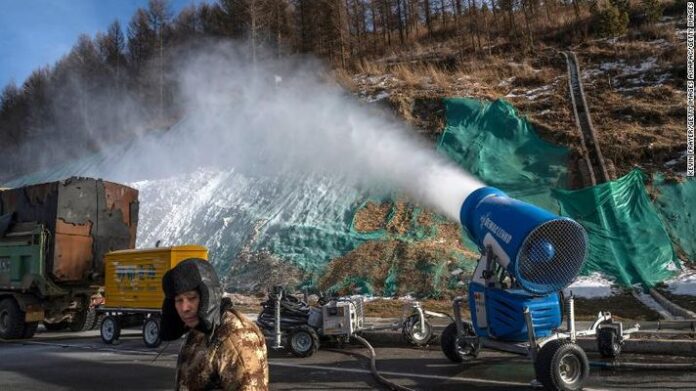
The thunderous sound of the snow machines preparing the Olympic sites northwest of Beijing would make it difficult to have a conversation. They’re noisy and they’re everywhere, blowing snow across the most-watched slopes this month.
It’s nearly lovely, if it weren’t for the fact that the venues are surrounded by an unending brown, parched countryside bereft of snow.
Climate variability has led the Winter Games to be practically 100% dependant on artificial snow, an Olympic first, albeit not one to brag about. This is part of a trend that is occurring at winter sports sites across the world.
If fossil fuel emissions continue unchecked, just one of the 21 cities that have hosted the Winter Olympics in the last 50 years would have a climate appropriate for winter sports by the end of the century, according to a recent research.
Natural snow is becoming less trustworthy for winter sports as the earth warms and the weather gets more irregular, forcing venues to rely more on artificial snow.
However, it comes at a price: man-made snow is very resource-intensive, necessitating vast quantities of energy and water to manufacture in an ever-warming environment. Elite sportsmen also claim that when artificial snow is used, the activities become more difficult and dangerous.
Is there no snow? Make this stuff up.
This winter, the region surrounding the outdoor Olympic venues is experiencing severe drought, but even in normal years, it is unsuitable for snow sports. Although greater snow years have been reported, the average yearly snowfall in Yanqing (where the Alpine slopes are) and Zhangjiakou (where many of the other events, including the biathlon, are conducted) is around 20 centimetres (7.8 inches).
TechnoAlpin, located in Italy, has been tasked with creating the snow needed to cover the four outdoor event areas in Beijing, a tremendous effort given the high-profile clients who will be passing through.
According to Mayr, this is the first time that all of the snow for the Winter Games has been provided by a single business.
However, several of the Beijing sites lack a crucial component for generating snow: temperatures cold enough to freeze water.
According to a recent Slippery Slopes analysis conducted by Loughborough University in London on how the climate issue is influencing the Winter Olympics, practically every February day in Beijing, which will host a few outdoor events, has been above freezing for the previous 30 years.
Higher elevation locations like as Yanqing and Zhangjiakou are colder, with typical high temperatures around freezing and lows of approximately -10 degrees Celsius at night.
Makers of ice are on a steroid high
Snowmaking has traditionally depended mainly on snow guns and temperatures below freezing. A new technique is required to accommodate higher temperatures and lower heights.
TechnoAlpin informed CNN that it began delivering a full arsenal of snow guns, fan-driven snow producers, and cooling towers to Beijing in 2018 to work around Mother Nature. The SnowFactory, a new piece of technology employed in a training centre for Chinese athletes, was one of such devices.
















